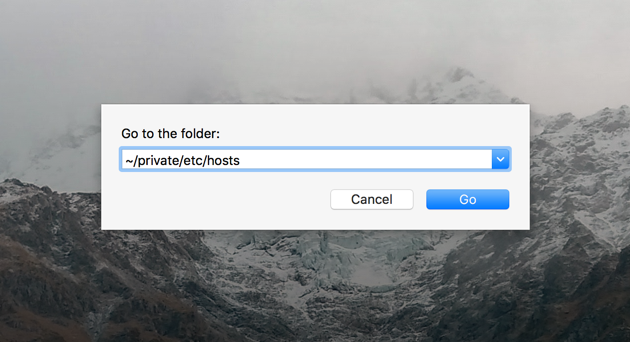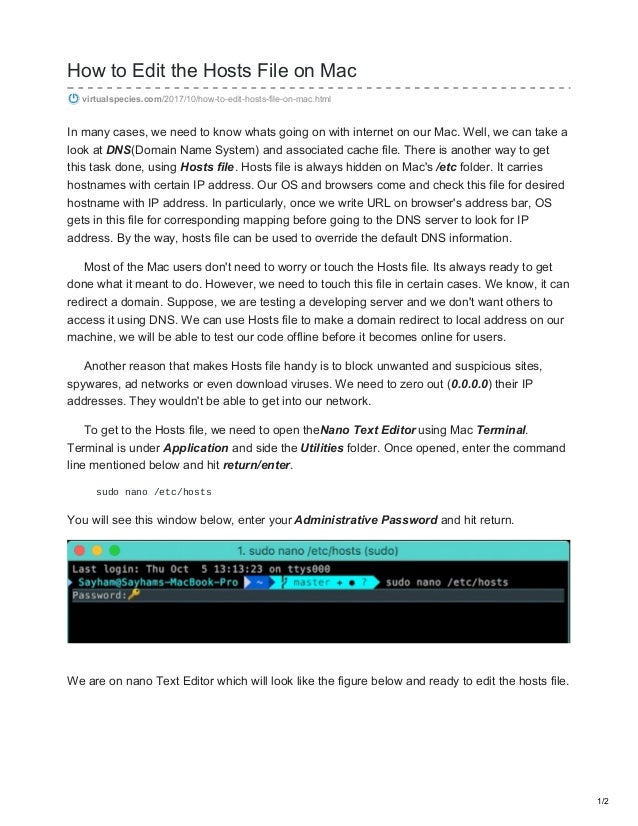Introduction
The Hosts File is an essential tool to change how your computer views a particular website. While most users will never need to alter their Hosts File, a web developer or user may need to modify the file to view a new site that is still under development.
To make your computer display your test website rather than the live site, you must add the test site's IP address, along with the domain name, to the Hosts File. As long as that information is contained in your Hosts File, your browser will redirect the request to display the site on the specified IP address. This allows us to test functionality without modifying the DNS for our production site.
- Follow these steps to open your hosts file on Mac: Access launcher (F4 key) and type in terminal in the search field. Click on the Terminal icon. We will use Nano text editor to open the hosts file.
- The hosts file is used to map hostnames (in other words domains) to IP addresses. With the hosts file, you can change the IP address that you resolve a given domain name to. This change only affects your own computer without affecting how the domain is resolved worldwide.
If using the terminal you can use nano, vi, vim, emacs to edit the file. The only problem with some of these editors is finding an explicit line. As I seem to recall, the knownhost file message gives a line number. Since the lines in the knownhosts file are very long, a lot of these editors line wrap so just counting visible lines is not. The hosts file is a file you will find on both Windows 10 and macOS. You can use it to block access to any website you want. We’ve discussed how you can edit the hosts file on Windows 10. If you want to block websites on macOS by editing the hosts file on it, you will find that it’s not as simple to access it.
We've included step-by-step instructions for locating the Hosts file, but you can also watch this video:
Hosts File Mac Location
Hosts File Location
But where is the Hosts file on our Mac located, and how do we edit it? The Hosts file on a Mac is found in the /etc/hosts folder. To edit the file, follow the steps below.
1. Launch the macOS Terminal application.
2. Go to the Finder, then Click Go.
3. Click Utilities.
4. Double-click Terminal to launch the Terminal window.
5. Now, enter the following command: sudo nano /etc/hosts
6. Then, enter the sudo password for your user to allow edit access to the file.
7. Next, use the arrow keys to move the cursor to the bottom of the file. On a new line, enter the testing server's IP address and the domain name you want to use for that IP address. (In the example below, we used the IP address 123.123.123.123 and the domain name mydomain.com)
8. Next, press Control+O to overwrite the existing file, then press Enter to confirm the overwriting. This saves the changes to the file.
9. Now, press Control+X to exit the nano editor.
10. Finally, to update our browsers DNS records and make these changes go live in your browser, enter the following command: sudo killall -HUP mDNSResponder


How To Add Host Entry On Mac
Conclusion
Hosts File Mac Osx
You have successfully edited your Hosts File and can now begin loading your test site from your testing IP address rather than your live server.